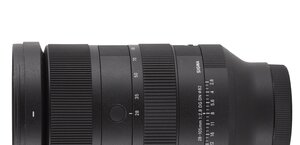Sigma C 24 mm f/2 DG DN
6. Distortion
The situation is worse, and even doubly so, on full frame. Firstly, the result we measured is higher, amounting to −4.93% but there have been attempts to reduce it by introducing moustache distortion. Consequently, if you limit your measurements to an area of 1:1 markings distortion can increase to a very high level of −6.12%.
I've been saying time and again that we don't like such an approach. Of course you might count on software of the camera but also you can try and reduce distortion with optics. Introducing moustache distortion is not a step in the right direction.
Please Support UsIf you enjoy our reviews and articles, and you want us to continue our work please, support our website by donating through PayPal. The funds are going to be used for paying our editorial team, renting servers, and equipping our testing studio; only that way we will be able to continue providing you interesting content for free. |
- - - - - - - - - - - - - - - - - - - - - - - - - - - - - - - - - - - - - - - - - - - - - - - -
In this category the Sigma should be criticized but still you have to remember that such rivals as the Tamron 2.8/24 or the Sony 2.8/24G had high distortion results as well. The Samyang 1.8/24 was an exception – its constructors tried to fight distortion but nevertheless they introduces small moustache deformations as well. Is efficient distortion reduction viable? The Zeiss Batis 25 mm f/2 showed that it is – the level of distortion in its case amounts to almost zero.
| Sony A7R III, 35 mm, APS-C | |||
 |
|||
| Sony A7R III, 35 mm, FF | |||
 |
|||






